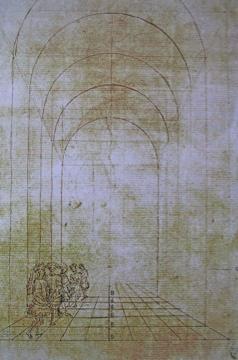Art history textbooks state that the first mathematically exact procedure used to construct perspective was invented by Filippo Brunelleschi in Florence around 1420; that this procedure was known as costruzione legittima and that Leon Battista Alberti, the first to write down a perspectival method, disseminated Brunelleschi's invention. This argument still finds its "legitimacy" in the academic authority yielded by Erwin Panofsky's Die Perspektive als symbolische Form from 1927.
Since that time, the main works on optical medieval science have been published and, today, we can say that the roots and propagation of a new Italian conscience of light—no longer understood as a metaphysical entity but rather as a physical phenomenon—gave birth to a new age of scientific and aesthetic thought.
In this Working Group paper the working hypothesis was that the "realistic effects" of fifteenth-century Italian painting were achieved in great part due to the spread of a new concept of light. A concept indeed transmitted by Ibn Al-Haytham’s theory of vision. We argued in particular that Al-Haytham’s definition of the visual features of distance (remotio) is the theoretical basis for the development of pictorial and graphical methods of the visual representation of space; those very methods that twentieth-century historiography has portrayed as empirical methods developed in artists' workshops. In our view, these methods are the result of a synthesis of Ibn Al-Haytham’s cognitive theory and Euclid's theory of proportions.
The prospective method presented by Leon Battista Alberti in his De pictura is divided into two parts. In the first part, he clearly adopts the above-mentioned procedures. In the second part, Alberti develops the well-known operations based on the intersection of the visual pyramid. This concept, formulated for the first time by Ibn Al- Haytam, and becoming widespread in artists' circles via Alberti's De pictura, is the foundational principle of optical science underlying the practice of Renaissance perspective.

